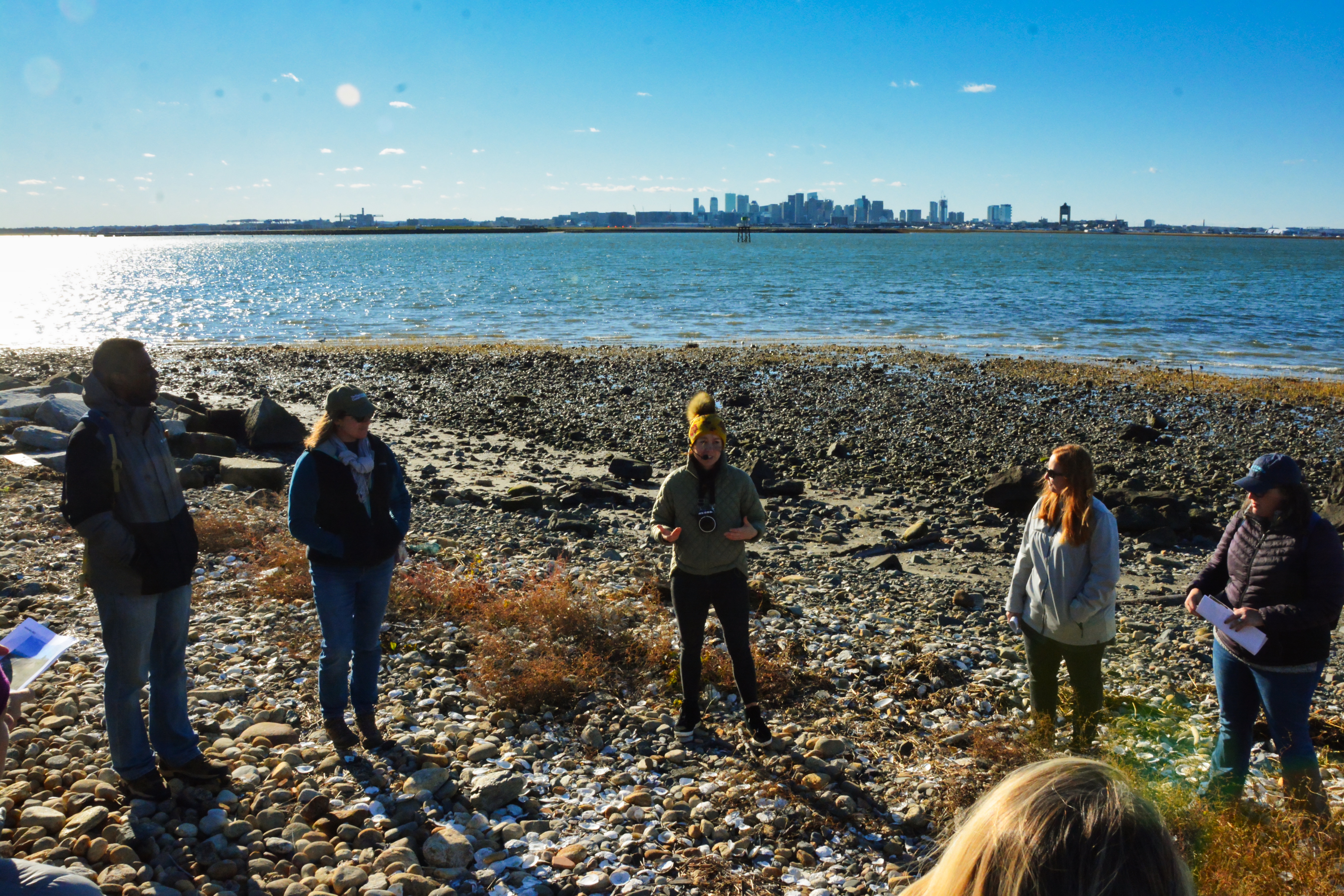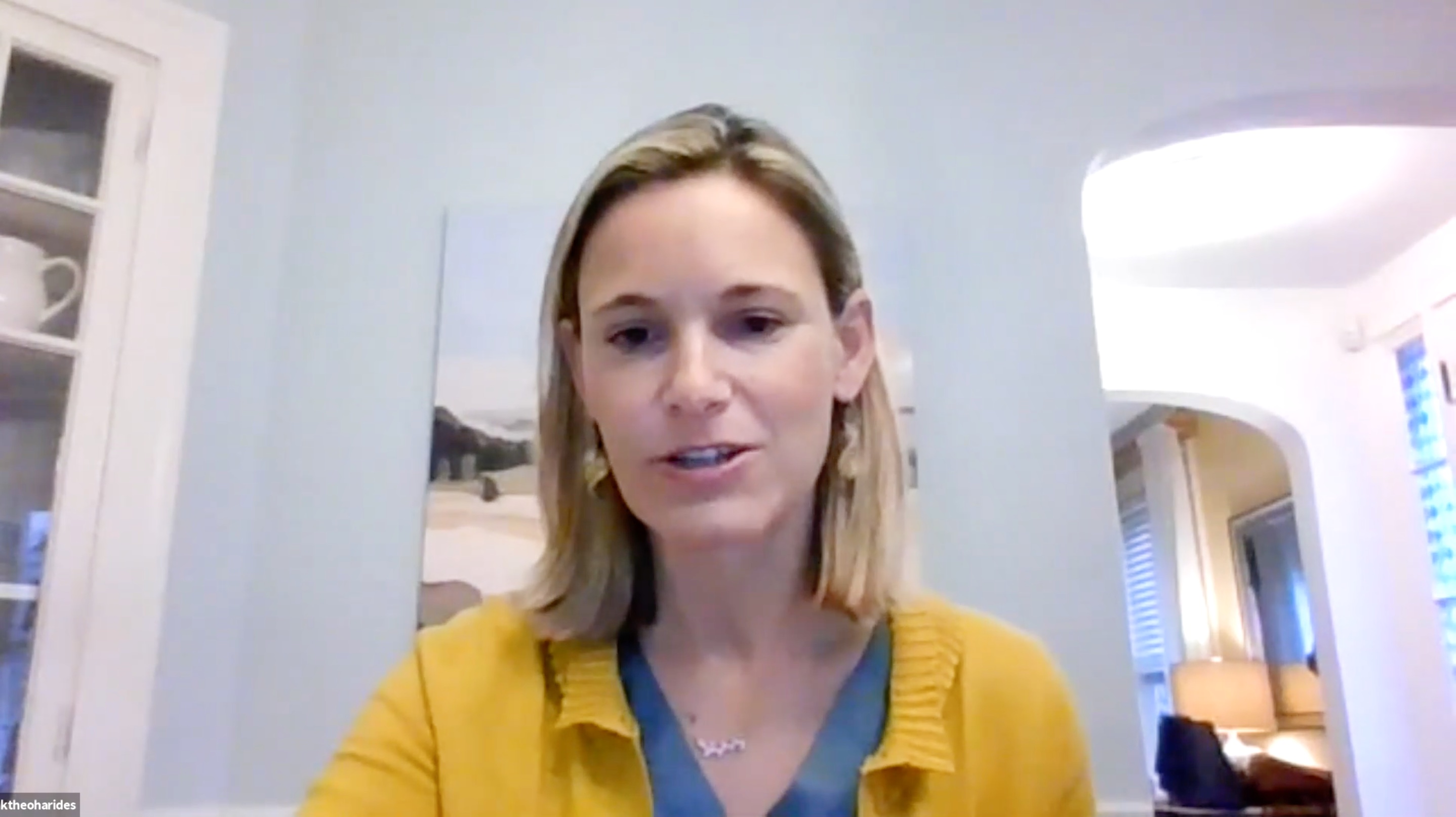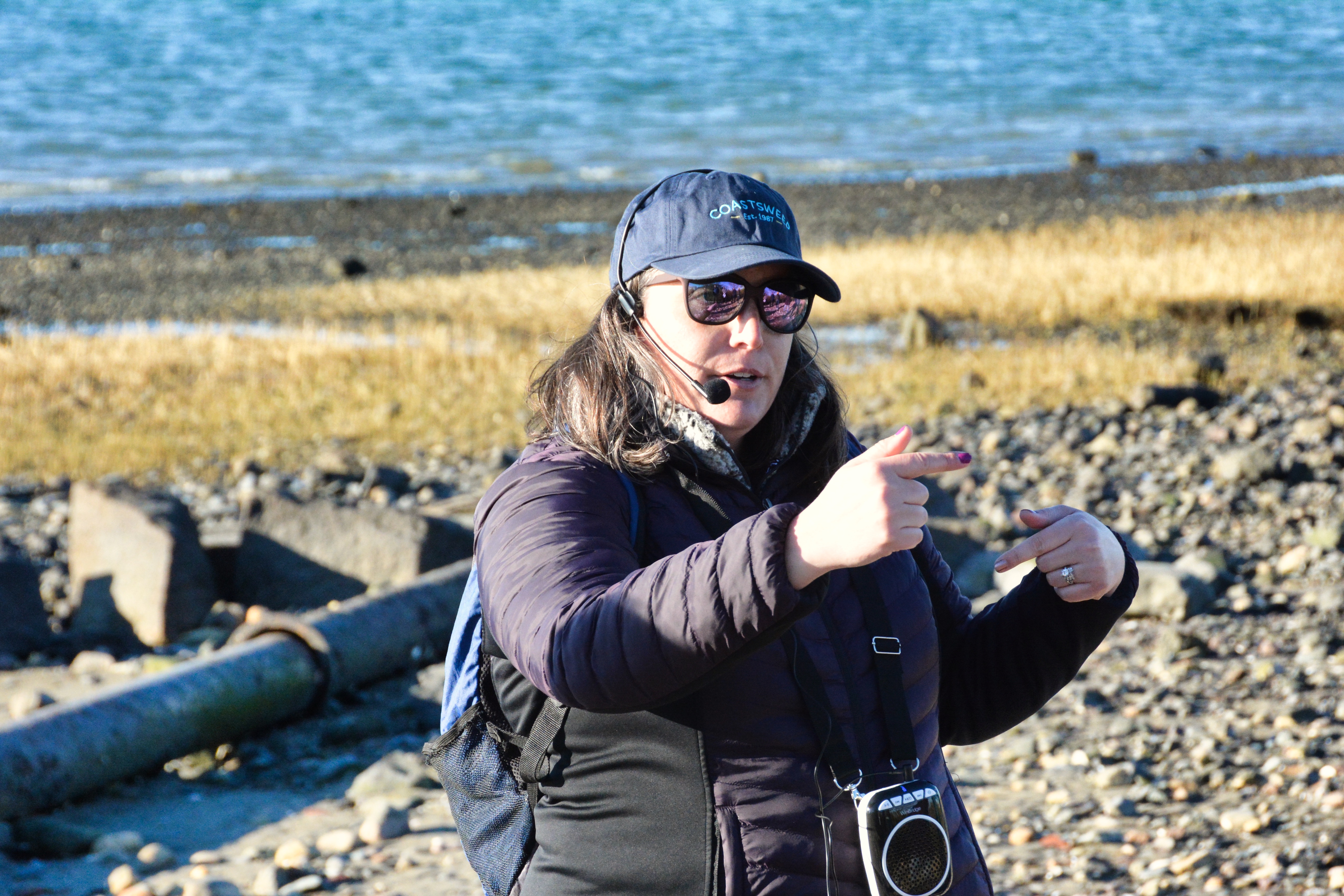How do we limit the effects of climate change in Boston Harbor? Environmental experts gathered at UMass Boston to find out.
"This is the kind of collaboration we need going forward."

What do Revere beach, Seaport Boulevard, the Boston Harbor Islands, and a UMass Boston classroom have in common?
They all sit right on Boston Harbor, and they are square in the path of the impacts of climate change like flooding, pollution, and disrupted ecosystems.
But there is good news for those sites and others that sit on the miles of coastline along Boston Harbor, and that is that there is a massive effort underway to combat the impacts of climate change in the harbor. Late last month leading experts came together for a virtual conference at UMass Boston hosted by the Stone Living Lab and the Boston Harbor Ecosystem Network, organizations which partner with UMass Boston and Northeastern University, respectively.
The conference, named Resilient Boston Harbor: Research for a Sustainable Future, brought together more than 100 of Massachusetts’ foremost coastal scientists, biologists, and climate researchers for a day of virtual workshops focused on a single goal: combatting the impacts of climate change on the state’s most vulnerable coastal regions in and around Boston Harbor.
“The goal of the conference was to discuss research needs for lowering coastal flood risks in Boston Harbor using nature-based approaches and also protecting and restoring ecosystems in the harbor,” said Paul Kirshen, a professor of climate adaptation at UMass Boston and director of the Stone Living Lab. “The workshop participants represented scientific experts, government officials, non-governmental organizations, students, and other stakeholders in the harbor.”
There to virtually kick off the talks was Kathleen Theoharides, secretary of the Massachusetts Executive Office of Energy and Environmental Affairs, another partner in the conference. Herself a UMass Boston alum and a trained biologist, she told attendees why climate partnerships like the Stone Living Lab are critical now more than ever.

“[This partnership] offers our state a tremendous chance to collect critical data around Boston Harbor, beginning with baseline monitoring at Rainsford Island, as well as a pilot project at Fallon Pier at UMass Boston,” she said. “Through the work at the Stone Living Lab we will be able to work together to ensure nature-based solutions work in increasingly volatile and unpredictable weather conditions to help implement climate resilience solutions that address historic inequities and environmental justice and identify priority areas for research and investment.
“I really believe this is the kind of collaboration we need going forward that can serve as a model for similar efforts and partnerships across the country.”
Cathleen Stone, President of the James M. and Cathleen D. Stone Foundation, which gave initial funding to the Lab and for which it is named, and Marcelo Suárez-Orozco, Chancellor of UMass Boston, each also gave opening remarks to the conference, speaking to the importance of fighting the climate crisis and it's local impacts in the state.
The conference included “lightning talks” with researchers from around the region, a poster session, and breakout sessions that split participants into smaller collaborative discussion groups and focused on new areas of exploration around the harbor’s ecosystems. Topics included discussions on experiments in Boston Harbor, resiliency of natural and developed coastal systems, and co-benefits of resiliency measures.
Participants were also invited to tour a completed coastline restoration site at Coughlin Park in Winthrop, where the Stone Living Lab is conducting monitoring to understand how the restoration project performs as part of a multi-site monitoring project.

“The outcome of the conference in my opinion was a consensus on both the biophysical science and the social science research needs,” said Kirshen, reflecting on the breakout sessions and the conference. “This common understanding will lead to increased research in these areas and a Boston Harbor that will better serve the region far into the future.”
Organizers anticipate that the conference would be the first of many, and plan on repeating the event annually in the years to come.
At the end of the final breakout session, Mark Borrelli, director of the CaPE Lab at UMass Boston, spoke about the co-benefits of climate resiliency and the research that the entire group was doing. He noted that the data they were collecting now would make an exponential difference in the future by helping other people feel as passionate about climate change as the group of scientists does.
“We don’t want people to act out of fear [of climate change],” he said. “By amassing all of this information and doing something with it, we can empower people to say yes, this is going to be a problem, but we can do something about it.”
About the Stone Living Lab
The Stone Living Lab is an innovative and collaborative initiative for testing and scaling up nature-based approaches to climate adaptation, coastal resilience and ecological restoration in the high-energy environment of the Boston Harbor Islands National and State Park. A “Living Lab” brings research out of the lab and into the real world by creating a user-centered, open, innovative ecosystem that engages scientists and the community in collaborative design and exploration. The lab is a partnership of the City of Boston, UMass Boston School for the Environment, Boston Harbor Now, the National Parks of Boston, the Massachusetts Department of Conservation and Recreation, and the James M. and Cathleen D. Stone Foundation.